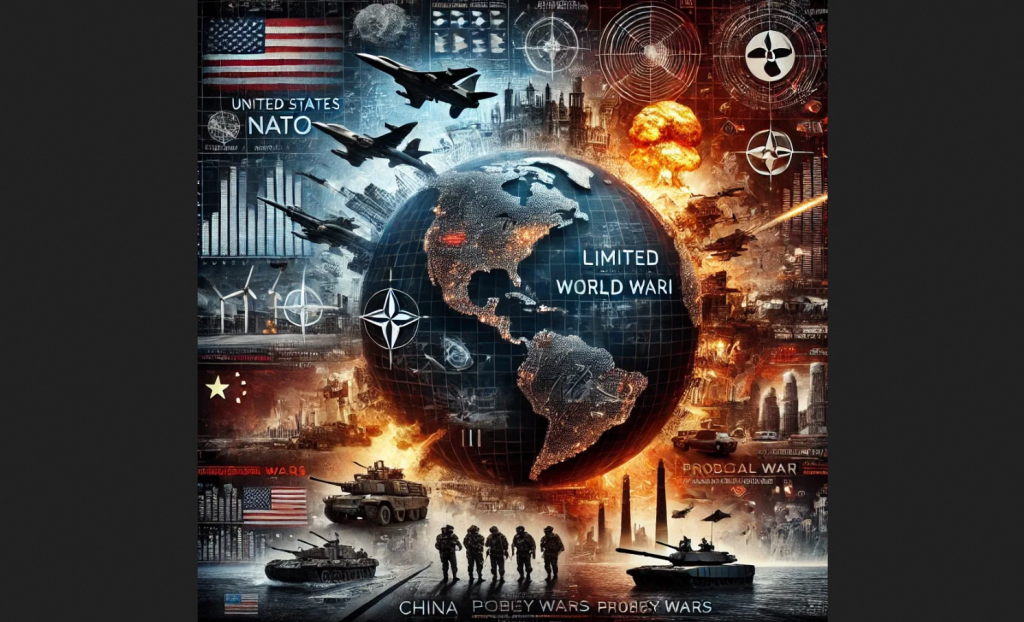In a landscape rife with geopolitical tensions, Dr. Mathew Maavak warns of an impending Limited World War III (L-WW3), characterized by a series of flashpoints, chokepoints, and High Value Targets (HVTs). Unlike conventional war scenarios that envision total devastation through full-scale military clashes, an L-WW3 would likely maintain certain restraints to avoid global catastrophe, particularly nuclear warfare. This conflict may manifest through regional confrontations, cyber warfare, infrastructural sabotage, proxy battles, and heightened economic competition, all potentially unfolding simultaneously or in swift succession.
Central to the L-WW3 analysis are the various flashpoints, regions where critical geopolitical tensions could ignite broader conflicts. A prominent example is the escalating conflict between Israel and Iran, recently heightened by Iran’s missile barrage in response to events in Gaza. Iranian strikes not only reflect wider regional anxieties but also demonstrate Tehran’s growing military capabilities, particularly in missile technology that could outpace Israel’s defenses. The timing of Israel’s response is under scrutiny, influenced by the shifting political landscape in the U.S. and the forthcoming presidential elections. These dynamics suggest that a wider war in the Middle East is not an abstract concern but a tangible possibility that could precipitate broader global instability.
Ukraine stands as another consequential flashpoint. Russia is likely on the verge of achieving significant military objectives in this region, particularly the capture of the Donbas region, which would leave Ukraine without crucial access to the Black Sea. This potential victory could fundamentally reshape the geopolitical balance in Eurasia, especially as new American leadership takes office in 2025. In parallel, North Korea and China are expected to adopt a wait-and-see approach, likely engaging in low-intensity provocations that may distract U.S. military resources while tensions develop elsewhere. These geopolitical maneuvers reflect a complex interplay of interests where regional players may delay significant engagement until the situation crystallizes.
The concept of chokepoints further complicates the geopolitical landscape of L-WW3. These strategic geographic areas are crucial for global trade, military logistics, and energy transportation. Their disruption can have far-reaching implications. The Strait of Hormuz is a prime example, as it handles a significant percentage of the world’s seaborne oil shipments and remains vulnerable to Iranian threats. A closure or blockage could lead to skyrocketing energy prices and economic instability globally. The Bab el-Mandeb Strait and the Suez Canal are additional vital chokepoints, with the former already under threat from Iranian-aligned Houthi militias. Disruption in these areas signals a cascade of consequences for global supply chains and economic stability.
In addition to the Middle Eastern chokepoints, significant chokepoints exist in Asia that could further escalate tensions during an L-WW3. Each of these geoeconomic centers plays a pivotal role in maintaining global trade and military operations. The complications triggered by conflicts in these critical zones could exacerbate already existing tensions, making them prime targets for hostile actions. The interconnectedness of these chokepoints suggests that a conflict in any one area could have ripple effects, disrupting trade routes, military readiness, and creating a precarious balance that all involved actors must navigate carefully.
Ultimately, the scenario proposed by Dr. Maavak implies a complex and volatile geopolitical environment where flashpoints and chokepoints could lead to a series of conflicts resembling L-WW3. As military and political actors engage in strategic maneuvering, the potential for miscalculations remains high. The type of war envisioned does not favor total devastation but rather an intricate dance of geopolitical conflicts that have the potential to reshape global power dynamics profoundly. In this context, it becomes increasingly vital for nations to assess and respond to these evolving threats with strategies that emphasize deterrence and diplomacy, lest the world be drawn into a series of conflicts that spiral out of control.

